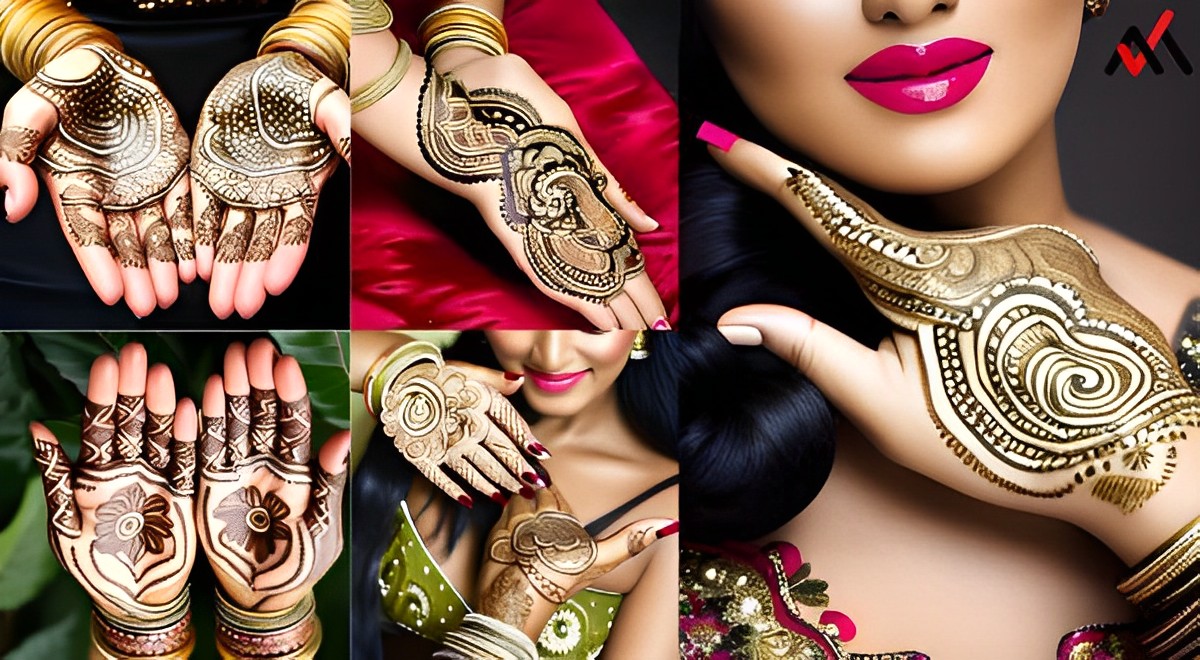Mehandi, also known as Henna, is a traditional art form that has captivated cultures across the globe for centuries. Its rich history, cultural significance, and therapeutic properties make it a cherished form of body art. This article delves into the origins of Mehandi, its cultural significance, techniques of application, health benefits, and its role in various traditions and celebrations.
Mehandi is a form of temporary body art created using a paste made from the powdered leaves of the henna plant (Lawsonia inermis). The term “Mehandi” is derived from the Sanskrit word “Mendhika,” which refers to the application of henna on the skin. Its origin can be traced back to ancient civilizations, with evidence of its usage found in ancient India, Egypt, and the Middle East.
Page Index
- Cultural Significance and traditions associated with Mehandi
- Historical Background
- Cultural Significance
- Techniques and Application of Mehandi
- Health Benefits of Mehandi
- Bridal Mehandi
- Mehandi Festivals and Events
- Mehandi and the Fashion Industry
- Precautions and Safety Measures
- Mehandi in Different Cultures
- Contemporary Mehandi Art
- Mehandi as a Therapeutic Practice
- Mehandi and Celebratory Occasions
- Global Mehandi Artists and Influencers
- Mehandi in Traditional Medicine
- Mehandi in Contemporary Art and Culture
- Mehandi and Social Impact
- Author
Cultural Significance and traditions associated with Mehandi
Mehandi holds deep cultural significance in many societies. It is an integral part of various ceremonies and celebrations, symbolizing joy, beauty, auspiciousness, and protection.
Mehandi application is considered an art form passed down through generations, often accompanied by music, dance, and communal celebrations.
Historical Background
Ancient Origins and Early Usage
Mehandi has a long history that dates back thousands of years. Ancient Egyptians used henna to adorn their bodies during special occasions and religious ceremonies.
In India, Mehandi has been an essential part of cultural traditions for centuries, with evidence of its usage found in ancient texts and sculptures.
Spread and adoption across different cultures and regions
As civilizations interacted and cultures intertwined, Mehandi spread across different regions, adapting to local customs and traditions. It found its way to South Asia, the Middle East, North Africa, and Southeast Asia, where it became an integral part of cultural ceremonies such as weddings, festivals, and religious rituals.
Cultural Significance
Traditional ceremonies and celebrations involving
Mehandi application Mehandi holds immense cultural significance and is an integral part of various ceremonies and celebrations. In South Asian weddings, the bride and female members of the family adorn their hands and feet with intricate Mehandi designs during pre-wedding festivities.
Festivals like Karva Chauth, Rakshabandhan, Diwali, and Navratri also witness the application of Mehandi as a symbol of celebration and auspiciousness.
Symbolism and meanings behind different Mehandi designs
Mehandi’s designs are not just aesthetically pleasing; they carry deep symbolism and meanings. Each element and motif in the design holds significance.
For example, peacock feathers represent beauty and grace, lotus flowers symbolize purity and spirituality, and paisley patterns represent fertility and good luck.
Mehandi as a form of body art and expression
Beyond its cultural significance, Mehandi is also embraced as a form of body art and self-expression. Artists and individuals experiment with different design patterns, incorporating contemporary elements and personal symbolism. Mehandi’s designs have become a canvas for artistic expression and individuality.
Techniques and Application of Mehandi
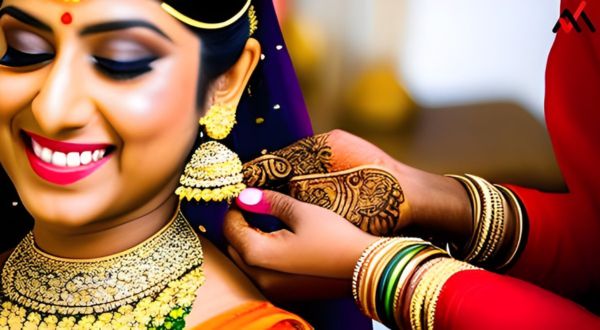
Preparation of Mehandi paste and ingredients
Mehandi paste is made by drying and grinding the leaves of the henna plant into a fine powder. This powder is then mixed with natural ingredients like lemon juice, tea, or essential oils to create a smooth paste. The paste is left to rest for several hours to allow the release of its dye.
Different application methods and tools
Mehandi can be applied using various techniques, each yielding unique design outcomes. The most common method is the freehand application, where the artist uses a cone or brush to create intricate patterns directly on the skin.
Stencils and templates are also used to achieve precise and symmetrical designs. Another technique involves transferring the design onto the skin using carbon paper or transfer paste.
Popular designs and patterns in different regions
Mehandi designs vary across different regions, reflecting cultural diversity and artistic influences. In South Asia, elaborate and intricate designs covering the hands and feet are prevalent.
Indian Mehandi designs often incorporate peacocks, floral patterns, and intricate geometric shapes. Arabic Mehandi, on the other hand, focuses on bold floral motifs and linear patterns that emphasize simplicity and elegance.
Health Benefits of Mehandi
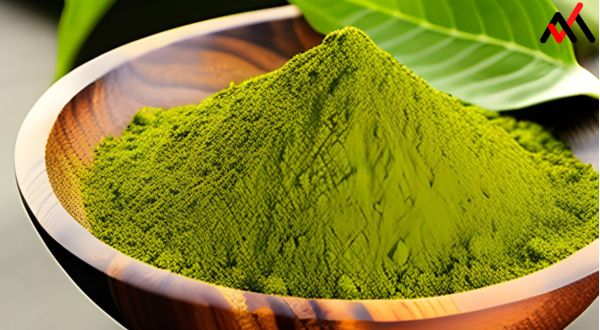
Cooling and soothing properties of Mehandi
Mehandi possesses natural cooling properties, making it a popular remedy for hot climates and sunburns. When applied to the skin, it provides a soothing and refreshing sensation, helping to alleviate discomfort.
This cooling sensation can be particularly beneficial during hot weather or in situations where the body temperature needs to be regulated. Additionally, the application of Mehandi is often accompanied by gentle massages, which further contribute to relaxation and stress reduction by calming the nerves.
The combination of the cooling properties and the therapeutic touch of the Mehandi application creates a calming and rejuvenating experience for the body and mind.
Antimicrobial and antifungal effects
The natural antimicrobial and antifungal properties of Mehandi make it an effective treatment for various skin conditions. It has been used to combat issues such as eczema, ringworm, and fungal infections. Mehandi’s antimicrobial effects help prevent infections and promote healthy skin.
Natural hair care and conditioning properties
Mehandi is widely used as a natural hair dye and conditioner. When applied to the hair, it strengthens the strands, promotes hair growth, and helps prevent dandruff and scalp issues. Mehandi also imparts a beautiful reddish tint to the hair, adding a natural highlight.
Skin nourishment and hydration
When Mehandi is applied to the skin, it acts as a natural moisturizer, leaving the skin soft, supple, and hydrated. The dye molecules bind to the keratin in the skin, creating a barrier that helps retain moisture and prevent dryness. This moisturizing effect is particularly beneficial in arid climates or during winter months.
Anti-inflammatory properties
Mehandi possesses anti-inflammatory properties that can help reduce swelling, redness, and itching associated with certain skin conditions. Its application can provide relief to individuals with conditions like psoriasis or insect bites.
Aromatherapy and relaxation
The application of Mehandi is often accompanied by the soothing fragrance of henna. The aroma of Mehandi is known to have a calming effect on the mind and can be considered a form of aromatherapy. The relaxation and therapeutic benefits of Mehandi extend beyond the visual beauty, creating a holistic experience.
Bridal Mehandi
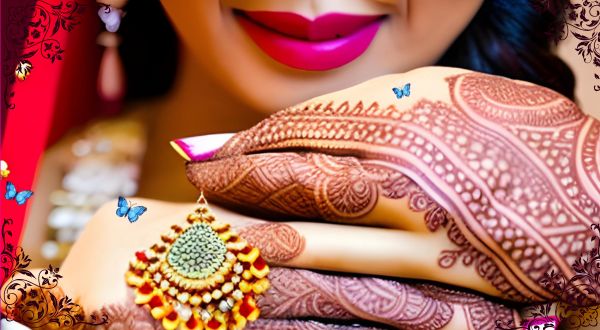
Role of Mehandi in Wedding Ceremonies
In many cultures, Mehandi plays a vital role in wedding ceremonies. It is an essential part of pre-wedding festivities and is considered a symbol of good luck and blessings for the bride. The application of bridal Mehandi is often an elaborate and time-consuming process.
Elaborate designs and motifs for bridal Mehandi
Bridal Mehandi designs are typically intricate and elaborate, covering the hands, arms, feet, and legs of the bride. These designs often feature elaborate motifs such as paisleys, flowers, and intricate patterns that symbolize love, prosperity, and marital bliss.
Different regions have their unique customs and traditions related to the bridal Mehandi. For example, in Indian weddings, the bride’s Mehandi may include the groom’s name or initials hidden within the design.
In some Middle Eastern cultures, the night before the wedding, a Mehndi Night is held, where the bride and her female relatives and friends gather to celebrate. Intricate designs are created, and the event often includes singing, dancing, and traditional rituals.
Mehandi Festivals and Events
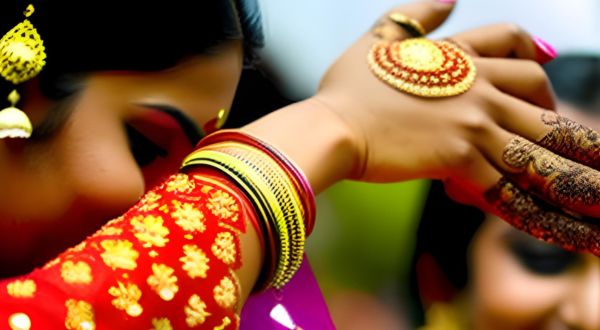
Celebration of Mehandi in festivals like Karva Chauth, Shiv Pooja, Eid, etc
Mehandi holds a special place in various festivals and celebrations. In Hindu culture, Karva Chauth is a festival where married women observe a day-long fast for the well-being of their husbands.
In Rakshabandhan, Hindu females apply mehandi on their hands and tie rakhi on their brother’s hand for their long life and protection
Women decorate their hands with intricate Mehandi designs as part of this auspicious ritual. During Eid, Muslims apply Mehandi as part of the festivities, symbolizing joy and celebration.
Community events and competitions centered around Mehandi
Mehandi has become a source of community bonding and celebration, with events and competitions dedicated to showcasing the art form. These events bring together Mehandi artists, enthusiasts, and the general public, providing a platform to appreciate and promote the beauty of Mehandi.
Global festivals and gatherings dedicated to Mehandi art
Mehandi has gained international recognition, leading to the emergence of global festivals and gatherings focused on celebrating and exploring the art form.
These events bring together Mehandi artists, enthusiasts, and experts from around the world to share their knowledge, showcase their talent, and promote cultural exchange.
Mehandi and the Fashion Industry
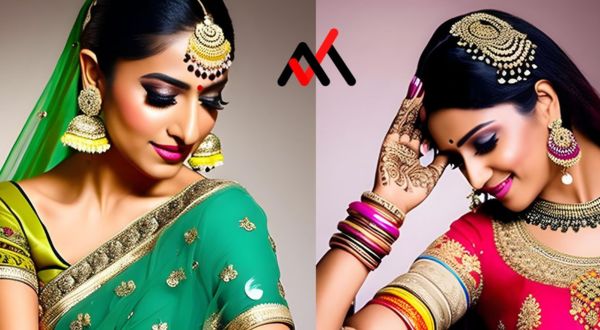
Mehandi’s Influence on Fashion and accessory trends
Mehandi has significantly influenced the fashion industry, with Mehandi-inspired patterns and motifs making their way into clothing, jewelry, and accessory designs.
Designers often draw inspiration from Mehandi patterns, incorporating them into their collections to add a touch of traditional elegance and cultural symbolism.
Mehandi as popular choice
Temporary body art, including Mehandi, has gained immense popularity as a fashion statement. People of all ages and backgrounds choose Mehandi as a temporary adornment for special occasions, festivals, or simply as a means of self-expression.
Collaboration of Mehandi artists with fashion designers
Mehandi artists have collaborated with fashion designers to create unique and innovative designs. Mehandi motifs have been translated into fabric prints, embroidery patterns, and jewelry designs, showcasing the fusion of traditional art with contemporary fashion.
Precautions and Safety Measures
Allergic reactions and sensitivities to Mehandi
Although rare, some individuals may experience allergic reactions or sensitivities to Mehandi. It is crucial to perform a patch test before applying Mehandi to check for any adverse reactions. Those with a known sensitivity to plant dyes or similar substances should exercise caution.
Proper sourcing of natural and safe Mehandi products
To ensure safety, it is important to source Mehandi products from reputable suppliers who offer natural and high-quality henna powder. Avoid products that contain harmful additives or chemicals that can cause skin irritation or allergic reactions.
Tips for Safe Application and Aftercare
Safe application of Mehandi involves maintaining cleanliness and hygiene. It is essential to clean the skin properly before applying Mehandi and to avoid using Mehandi on open wounds or broken skin.
Aftercare involves allowing the Mehandi paste to dry naturally, avoiding contact with water or excessive rubbing, and applying a protective balm or oil to enhance the color and longevity of the design.
Mehandi in Different Cultures
Mehandi traditions in South Asia (India, Pakistan, Bangladesh, etc.)
In South Asia, Mehandi holds great cultural significance and is an integral part of weddings, festivals, and religious celebrations. Intricate and elaborate Mehandi designs are created on the hands and feet of individuals, with regional variations in patterns and motifs.
The application of Mehandi is often accompanied by traditional songs, dances, and rituals, creating a festive and joyous atmosphere.
Mehandi practices in the Middle East (Arabian Peninsula, Iran, etc.)
In the Middle East, Mehandi is an integral part of celebrations and ceremonies, particularly weddings. Arabic Mehandi designs are known for their bold and geometric patterns, with an emphasis on floral motifs and intricate details.
Middle Eastern brides often have their hands and feet adorned with elaborate Mehandi designs as a symbol of beauty, good luck, and fertility.
Mehandi customs in North Africa (Morocco, Egypt, etc.)
North Africa also has a rich tradition of Mehandi. Moroccan Mehandi designs are characterized by their geometric patterns and the incorporation of cultural symbols such as the evil eye and geometric motifs inspired by Islamic architecture.
Mehandi is used in various celebrations, including weddings and religious festivals, as a way to beautify and adorn the body.
Mehandi variations in Southeast Asia (Indonesia, Malaysia, etc.)
In Southeast Asia, Mehandi is known as “Henna” and is deeply rooted in cultural traditions. Indonesian and Malaysian Mehandi designs often feature bold and intricate floral patterns, with influences from both Arabic and Indian styles.
Henna is used during weddings, childbirth ceremonies, and other joyous occasions as a way to bring blessings, protection, and good fortune.
Contemporary Mehandi Art
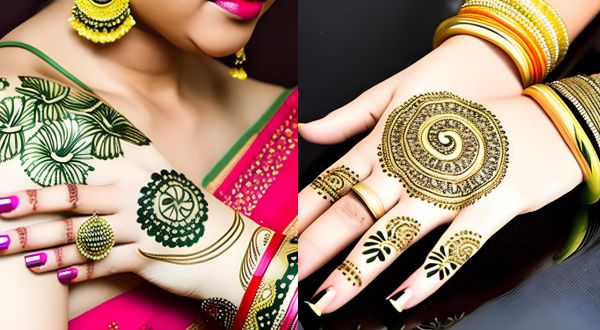
Modern adaptations and innovations in Mehandi’s designs
Mehandi art has evolved with time, embracing modern adaptations and innovative designs. Contemporary Mehandi artists experiment with different styles, incorporating elements from various art forms, such as calligraphy, mandalas, and fusion of cultural motifs. These designs often reflect individual creativity and personal expression.
Fusion of traditional and contemporary styles in Mehandi art
The fusion of traditional and contemporary styles has become a popular trend in Mehandi art. Artists combine traditional elements and motifs with modern techniques, such as incorporating negative space, incorporating metallic accents, or creating designs with a minimalist approach. This blending of styles adds a unique touch to Mehandi’s art.
Influence of Social Media on Mehandi Trends and Inspiration
Social media platforms have played a significant role in popularizing Mehandi art and shaping trends. Artists and enthusiasts share their designs, techniques, and inspirations, leading to a vibrant online Mehandi community.
Social media platforms serve as a source of inspiration, allowing artists to showcase their work and connect with a global audience.
Mehandi as a Therapeutic Practice
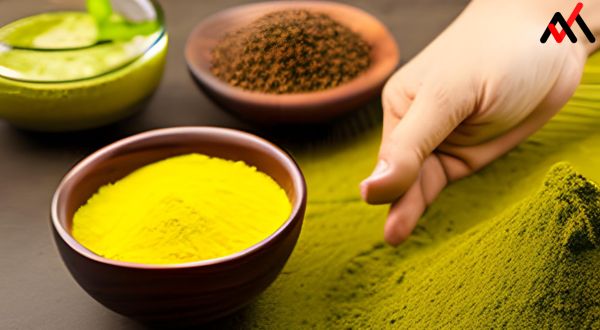
Mehandi as a relaxation and mindfulness technique
The process of applying Mehandi can be meditative and relaxing, promoting a sense of mindfulness and tranquility. Both the artist and the recipient can experience a therapeutic and calming effect during the Mehandi application process.
Incorporating aromatherapy into the Mehandi application
Aromatherapy can be combined with Mehandi application by using essential oils with calming and uplifting scents. The fragrance of oils like lavender rose, or sandalwood enhances the overall sensory experience, contributing to relaxation and emotional well-being.
Mehandi as a form of self-care and body positivity
Mehandi application is often seen as a form of self-care and body positivity. It allows individuals to connect with their bodies, express their creativity, and embrace their unique beauty. Mehandi’s art can serve as a reminder of self-love and acceptance, promoting a positive body image.
Mehandi and Celebratory Occasions
Mehandi’s role in pre-wedding ceremonies (Mehandi nights, Sangeet, etc.)
Pre-wedding ceremonies often include a dedicated Mehandi night or function, where the bride and her female relatives and friends gather to celebrate. This is a joyful occasion filled with music, dance, and laughter.
The bride and the female attendees have intricate Mehandi designs applied on their hands and feet. It serves as a time for bonding, celebration, and anticipation of the upcoming wedding.
Mehandi holds a significant place in festive celebrations, particularly in South Asian cultures. During festivals like Diwali, Navratri, Eid, or other religious and cultural events, people adorn their hands and feet with Mehandi as a way to embrace the festive spirit and enhance their traditional attire. It adds an element of beauty, joy, and auspiciousness to the celebrations.
Mehandi in cultural and religious events (Rituals, puja, etc.)
Mehandi is often incorporated into various cultural and religious events as a sacred and symbolic practice. In some traditions, Mehandi is applied during religious ceremonies, pujas, or rituals as a way to invoke blessings and protection. The intricate designs on the skin are believed to ward off evil spirits and bring good luck and prosperity.
Global Mehandi Artists and Influencers
Recognized Mehandi artists and their contributions to the art form
The world of Mehandi is enriched by talented artists who have made significant contributions to the art form. These artists have honed their skills, mastered intricate techniques, and developed their unique styles.
Their work showcases the diversity and creativity within Mehandi art and inspires aspiring artists and enthusiasts worldwide.
Emerging Mehandi Influencers and Their Impact on Trends
In the era of social media, emerging Mehandi influencers have gained prominence, shaping trends and inspiring a new generation of artists.
These influencers share their knowledge, techniques, and designs through various online platforms, helping to popularize Mehandi art and encouraging its exploration and experimentation.
Mehandi workshops, seminars, and educational resources
To nurture the growth of Mehandi as an art form, workshops, seminars, and educational resources are available to both beginners and experienced artists.
These platforms provide opportunities to learn from renowned Mehandi artists, acquire new skills, and delve deeper into the cultural and historical aspects of Mehandi. They contribute to the preservation and evolution of this traditional art form.
Mehandi in Traditional Medicine
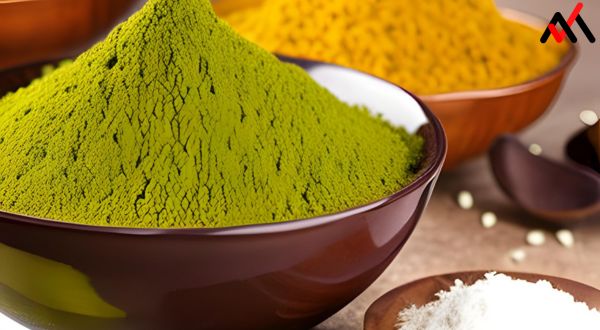
Historical use of Mehandi in Ayurveda and traditional healing systems
Mehandi has a long history of use in traditional medicine, particularly in Ayurveda, the ancient Indian healing system. It is believed to have cooling and medicinal properties, and its paste is used for various purposes, such as soothing burns, alleviating headaches, and treating skin conditions.
Mehandi’s potential benefits for skin conditions and Ailments
In traditional medicine, Mehandi has been used to address various skin conditions, including rashes, eczema, and fungal infections. Its antimicrobial and anti-inflammatory properties are believed to help soothe and heal the skin, making it a natural remedy for certain ailments.
Research and scientific studies on Mehandi’s medicinal properties
While Mehandi has a rich history of traditional use in medicine, there is ongoing research to explore its potential therapeutic properties.
Scientific studies have focused on Mehandi’s antimicrobial, anti-inflammatory, and wound-healing effects, supporting some of its traditional uses and shedding light on its potential applications in modern medicine.
Mehandi in Contemporary Art and Culture
Mehandi as an art form beyond traditional applications
In recent years, Mehandi has transcended its traditional boundaries and entered the realm of contemporary art. Artists have started using Mehandi as a medium for creative expression, experimenting with abstract designs, unconventional patterns, and innovative techniques.
Mehandi is now showcased in art galleries, exhibitions, and installations, blurring the lines between traditional and contemporary art forms.
Mehandi’s Role in Promoting Cultural Heritage and Identity
Mehandi plays a crucial role in preserving and promoting cultural heritage and identity. Through Mehandi, cultural traditions, stories, and symbols are passed down from one generation to another.
It serves as a visual representation of cultural diversity and pride, fostering a sense of belonging and connection to one’s roots.
Mehandi as a form of cross-cultural exchange and fusion
Mehandi has become a catalyst for cross-cultural exchange and fusion, bringing together diverse artistic styles and traditions. Artists from different cultural backgrounds often collaborate, merging their techniques and designs to create unique and harmonious Mehandi art pieces.
This cross-cultural exchange promotes understanding, appreciation, and celebration of cultural diversity.
Mehandi and Social Impact
Empowerment of Mehandi artisans and women entrepreneurs
Mehandi has provided opportunities for women artisans to showcase their talent, earn a livelihood, and gain financial independence.
Many women have established successful businesses as Mehandi artists, offering their services for weddings, events, and celebrations. This empowerment of women contributes to gender equality and economic empowerment.
Mehandi has also been used as a tool for philanthropy and supporting social causes. Various initiatives involve Mehandi artists donating their time and skills to raise funds for charitable organizations or participating in events that promote social awareness and positive change.
Mehandi’s Role in Fostering Cultural Understanding and Appreciation
As Mehandi transcends borders and gains global popularity, it acts as a bridge for cultural understanding and appreciation. People from different cultures engage with Mehandi, learn about its cultural significance, and develop an appreciation for its beauty and intricate craftsmanship. This fosters a sense of respect, unity, and celebration of diverse cultures.
In conclusion, Mehandi, with its rich history, cultural significance, and artistic expression, holds a special place in various communities worldwide. From weddings to festivals, Mehandi is deeply embedded in traditions, celebrations, and personal expressions.
Its evolving art forms, therapeutic properties, and social impact contribute to its continued relevance and appeal. Mehandi not only beautifies the body but also serves as a powerful symbol of culture, creativity, and connection, transcending boundaries and bringing people together.

